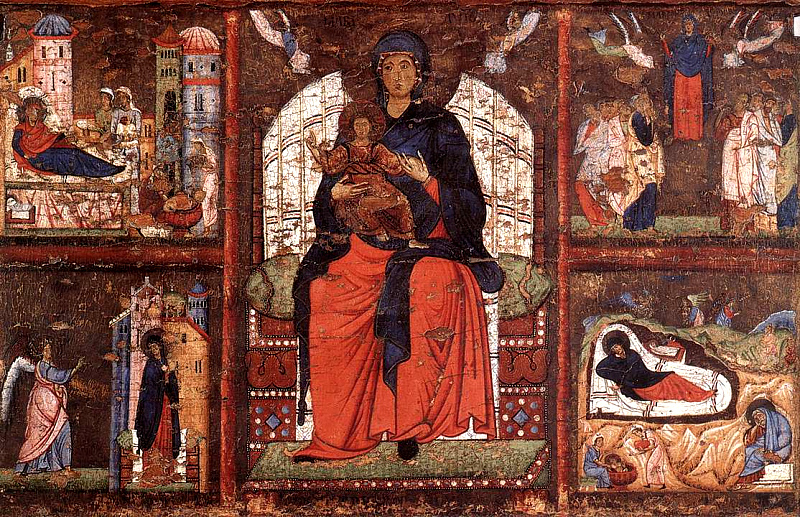Simeone and Machilone of Spoleto,The Virgin Enthroned

1270-75
Tempera on wood, 32⅙ x 47¼ (79.2 x 120 cm.)
Museum Mayer van den Bergh, Antwerp
"Dossals" such as this developed after the first quarter of the 13th century. They were painted on a single wooden panel with a tall portrait in the center flanked by painted "columns" that separate it from a vertical array of smaller images. Sometimes, although not in this case, there will also be a small image above or below the central portrait.
Here the Virgin Mary sits in the center on a throne and holds the Christ Child, who raises his right hand in blessing. As in the Throne of Wisdom sculptural genre the child is on Mary's lap and the bilateral symmetry gives a serene formality. But the two figures sit more naturalistically than in the Throne of Wisdom: Mother and child hold hands; Mary's feet are not aligned; and there is something of a squirm in the way the child is posed.
The birth of Mary, in the upper left quadrant, is echoed by the birth of Jesus in the lower right. Each mother is similarly posed in the left center of the image, on a white bed with vertical stripes; and each child is being bathed by midwives. The differences, however, are telling. St. Anne is on a tall bed before a background of elegant urban structures and empty sky, while Mary lies on a blanket in a cave while in the background shepherds gaze at an angel in the heavens.
There is a similar chiasmic relation between the Annunciation and Assumption images. Again an urban locale in the one is contrasted with angels and sky in the other, and the dark mantle Mary that wears in the Annunciation image differs dramatically from the bright blue one in which she rises to Heaven.
Read more about Mary's birth, the Annunciation, and the Assumption.
Read more about medieval and Renaissance altarpieces.
Source: Web Gallery of Art